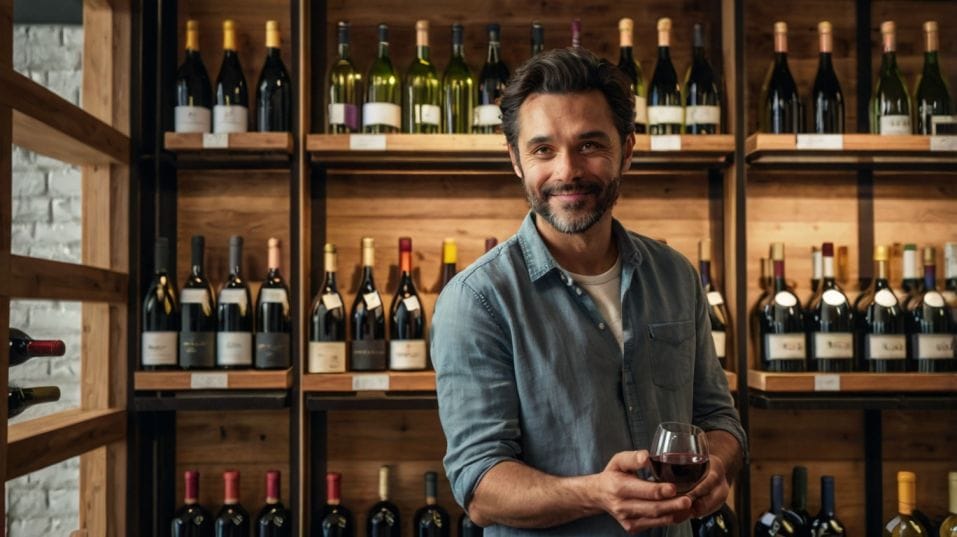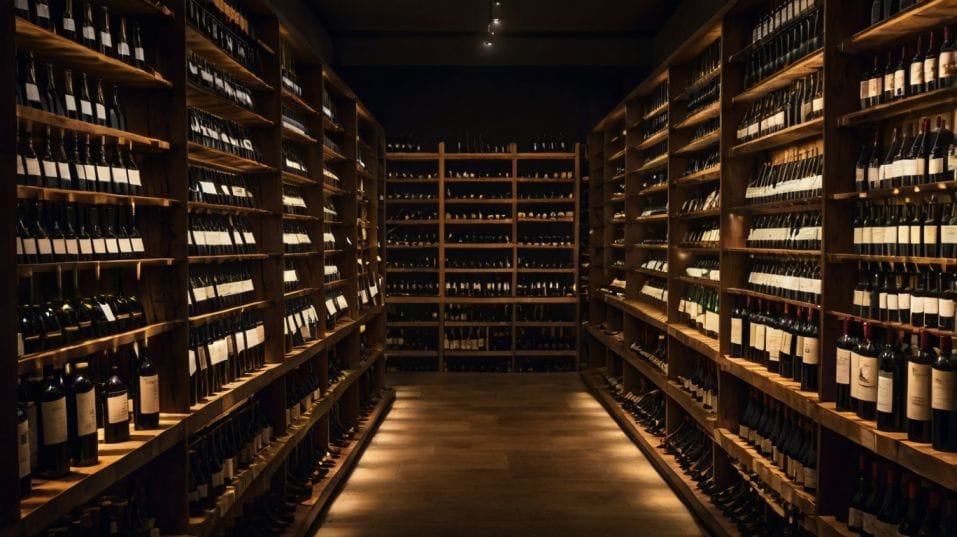Why Wine Labels Feel So Confusing (And How to Read Them)
Wine labels can feel cryptic, but they don’t have to be. Learn how to decode them and shop with clarity, purpose, and confidence.

Ever stare at a wine label and wonder if it's written in code? You're not alone. For curious drinkers ready to branch out, labels often feel like riddles—designed to impress, not inform.
But once you learn what they're really trying to say, choosing wine becomes less about guessing and more about discovering what you actually enjoy. With just a few key insights, that wall of bottles starts to look a lot more inviting.
Wine Labels Speak Two Dialects: Place vs. Grape
The first thing to know is that wine labels generally come from one of two traditions: Old World or New World. They each organize their labels differently, and that split alone can unlock a ton of confusion.
Old World wines come from Europe—think France, Italy, Spain, Germany. These regions often prioritize place over grape. So instead of saying "Pinot Noir," a Burgundy label just says "Bourgogne."
Instead of listing "Nebbiolo," an Italian label says "Barolo." The thinking here is: if you know the place, you already know what grape is inside—and what the wine should taste like.
Which is great if you’re already in the know. But when you’re starting out, it can feel like reading a map without a legend.

New World wines come from countries like the U.S., Australia, Chile, South Africa, and New Zealand. These labels tend to focus on grape first—Cabernet Sauvignon, Pinot Grigio, Syrah—and mention the region second.
That makes them easier to parse for beginners, but there’s a tradeoff. Regional names are often broader and less specific.
A label might say “California” or “South Eastern Australia,” which can encompass huge areas with wildly different growing conditions. So you get clarity on grape, but not always on style or nuance.
Understanding which style of label you’re holding gives you a starting point. It shifts your mindset from “I don’t get this” to “Ah—this one’s speaking a different dialect.” And that mindset shift matters.
Learn to Prioritize the Clues That Matter
Once you’re oriented—Old World or New World—it’s time to focus on the parts of the label that offer real insight into how the wine is going to taste.
Grape (Variety)
If it’s listed, this is often the clearest flavor signal on the label. Grape varieties carry consistent flavor profiles, even across countries and winemaking styles.
A Sauvignon Blanc will usually lean crisp, citrusy, and herbal. A Merlot tends to be soft, plummy, and round. But don't just memorize tasting notes.
Use the grape as a guidepost: what do you like about it? Are you drawn to high-acid whites or plush reds? Tasting more of the same variety from different regions is one of the fastest ways to calibrate your palate and deepen your confidence.
Region
Even within the same grape, origin shapes flavor. Pinot Noir from Oregon doesn’t taste like Pinot Noir from Burgundy. Why? Climate, soil, altitude, and winemaking traditions all play a role.
Broad regional labels—like "California" or "Italy"—offer less precision. Narrower terms—like "Russian River Valley" or "Chianti Classico"—often signal a more defined style, and sometimes higher quality.
Learning a few key regions and what they tend to produce well is like learning neighborhoods in a city. You don’t need to know every street, but the broad zones will point you in the right direction.
Vintage (Harvest Year)
Vintage doesn’t just reflect a wine's age. It gives clues about its ripeness, structure, and evolution. A cooler year might yield wines that are leaner and more acidic.
A hotter year might produce riper, bolder wines. But unless you’re cellaring bottles or collecting seriously, vintage is more of a style clue than a status symbol.
Younger wines (1–3 years old) are typically brighter and more fruit-driven. Older bottles can mellow, develop complexity, and lose some of their upfront fruitiness.
That evolution is part of the appeal—but only if the wine was made to age. Most aren't. So if you're shopping for something to enjoy tonight, fresher might be better.
Alcohol Level (ABV)
Often overlooked, this number actually tells you a lot about a wine's weight, ripeness, and balance. A 12% white might feel light and zippy. A 14.5% red might feel rich, ripe, and powerful. There’s no right or wrong here—just preference.
Want something refreshing and food-friendly? Look to lower ABV wines. Want something lush and warming for a slow evening? Reach higher. The number won't tell you everything, but it gives you a crucial early cue about the wine's personality.
The Words That Sound Fancy (But Aren’t Always Useful)
Some terms on wine labels sound like they mean something important—but they’re either vague, unregulated, or vary by country.
- “Reserve”: In Spain, it has legal meaning tied to aging. In the U.S., it means whatever the winemaker wants. Sometimes it's their top-tier wine. Sometimes it’s a marketing flourish.
- “Estate Bottled”: This means the winery grew the grapes and made the wine on-site. It suggests more control and traceability, but not necessarily better quality.
- “Old Vines”: Older vines can produce more concentrated fruit, but there’s no agreed age for what counts as “old.” One winery’s 30-year vines are another’s teenagers.
These terms can be useful context once you know the producer or region. Until then, treat them as supporting characters—not the main plot.
Go Beyond the Label: Let Taste Be the Final Judge
The more you taste, the more the label becomes a companion, not a puzzle. You’ll start to notice patterns: that you like the brightness of Albariño, or that Grenache always seems to deliver just the right mix of fruit and spice.
You’ll start remembering names—not brand names, but regions and grapes that align with your style.
And you’ll get better at identifying not just what a wine is, but how it feels: Is it mouthwatering? Structured? Silky? Energetic? Labels can point the way, but your palate is what builds confidence.
Final Thoughts
Wine labels may not always speak clearly, but they aren’t trying to shut you out. Once you know how to read them—with an eye for grape, region, vintage, and ABV—you can start making choices that reflect your taste, not someone else’s checklist.
Don’t aim to master it all at once. Start by paying attention to the wines you already enjoy. What do their labels tell you? What do they not say that you wish they did? Then take that curiosity to your next bottle.
Try a familiar grape from a new place. Seek out a wine with a vintage just a little older or younger than you're used to. Compare a bottle labeled by grape with one labeled by region. Let the label be the invitation—but let your taste be the guide.
Your ritual starts with the bottle, but it’s shaped by what you notice, what you learn, and what you love. Read closely. Drink thoughtfully. And keep going.




